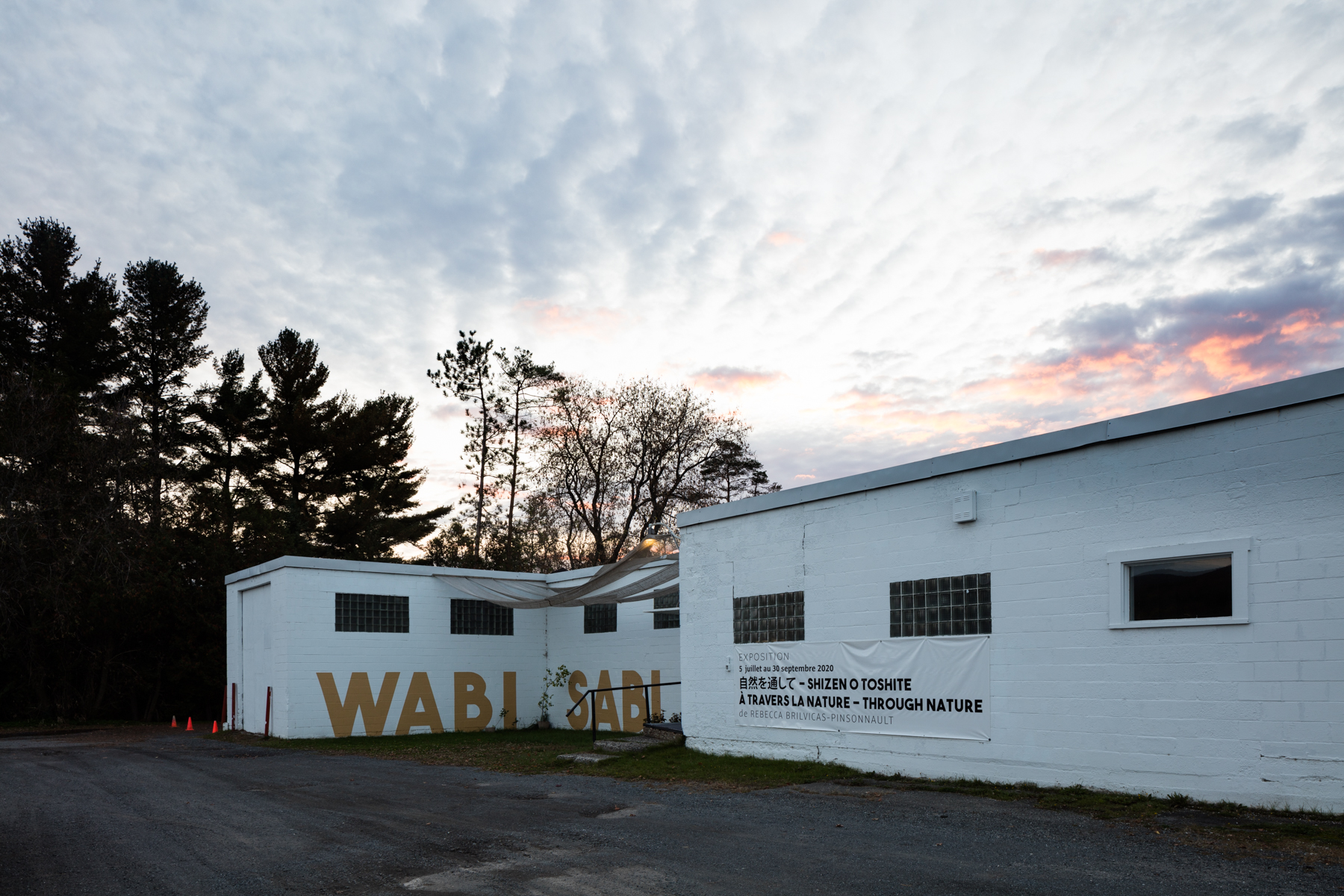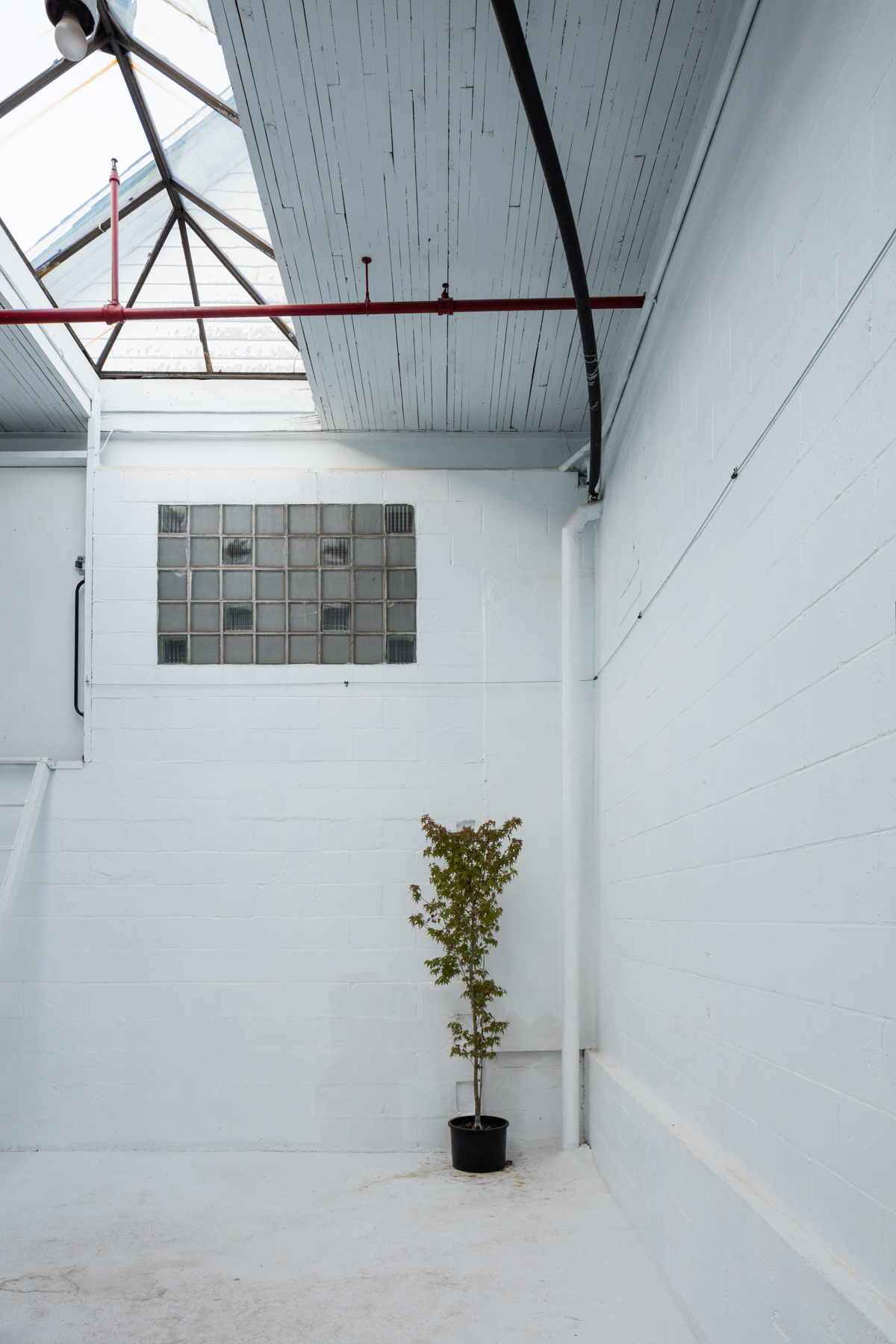Artist residency - The Atrium Space
The Atrium of the Sutton School of Art
An all-white space, underfloor heating and a glass roof opening onto the sky.
Here, the artist-in-residence is enveloped in natural light, silence and tranquility.
Contact us to arrange your next residency at: programmation@ecoleartsutton.ca
In Situ architecture
Was in residence from April 2023 to May 2023
SCHEDULE FOR VISITING THE EXHIBITION
Saturdays and Sundays from 10 a.m. to 3 p.m. until October 3, 2023
in situ atelier d'architecture
The collective in situ has been working for over 25 years to define an
architectural practice that explores the potential of contexts in its design process
where the notion of site is approached as an active datum, of a
spatial and temporal nature. In situ has developed particular expertise in
integrating contemporary interventions into built contexts,
complex cultures and lanscapes. The projects are thus part of a
temporality in which, in a catapult effect, a look at the past
informs the future. This understanding enables the workshop to
to create projects that are resilient to the transformations of our environments in the face of rapid social change.
La Laiterie - The exhibition
In situ launches the first Printemps de l'architecture exhibition at
the Sutton School of Art. This exhibition is a gateway to this new place in
the making, an industrial infrastructure housing a former dairy that is undergoing a transformation
into a regional cultural infrastructure dedicated to learning, teaching
and showing of art. In situ retraces the lines of thought developed since 2019
during the four years when it accompanied its founder in the
transformation of various buildings in this industrial complex.
This exhibition takes the form of a large-scale architectural ideation workshop,
presents the workshop's approach in a fun and educational way,
to stimulate young people's interest in architectural thinking and help them understand the issues involved in an architecture project:
taking on the memory of the place, the spatial context of the different scales it addresses,
to stimulate young people's interest in architectural thinking and help them understand the issues involved in an architecture project:
and its deployment over time, and the uses that change with the seasons. The workshop
aims to open a dialogue with young people, organizations and the community,
to imagine and grow the project. It invites young people to imagine the next stage of the project,
to build it up and integrate it into the model, a playground for the imagination.
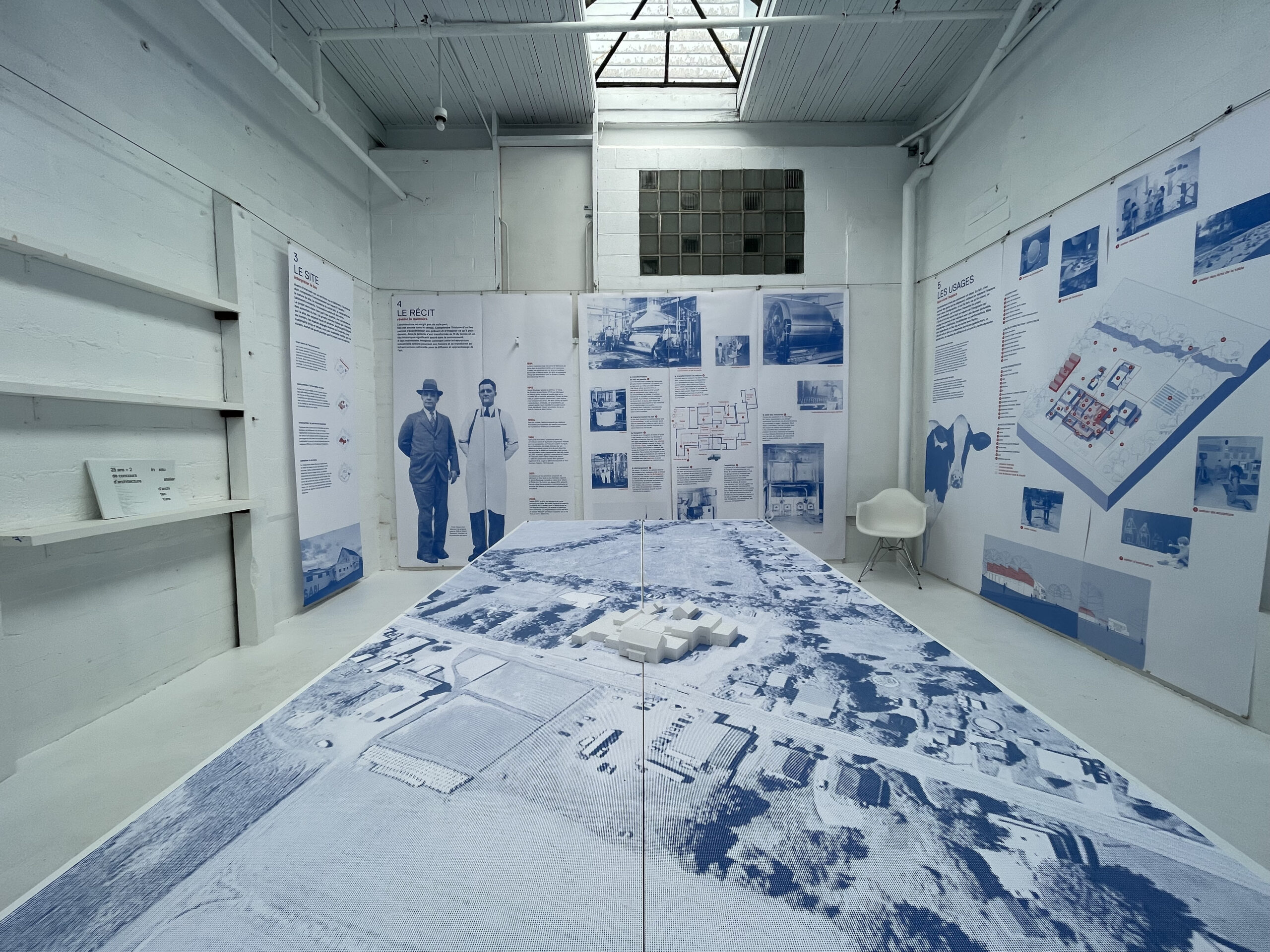
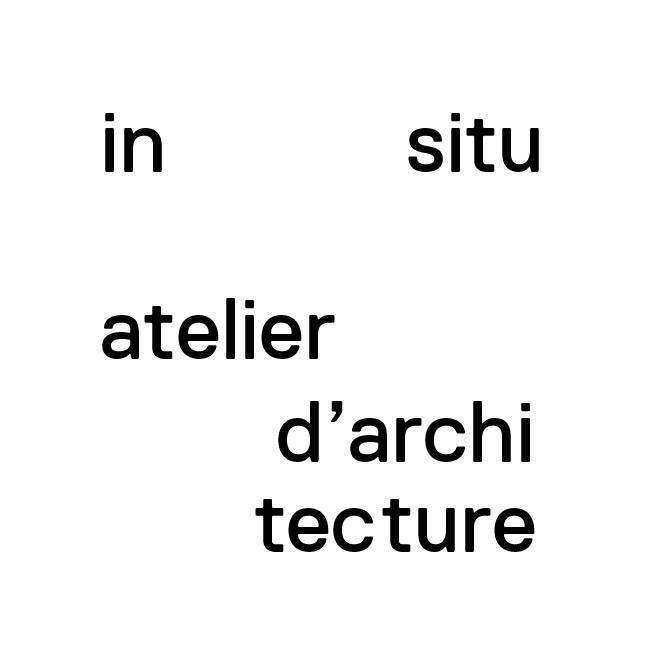

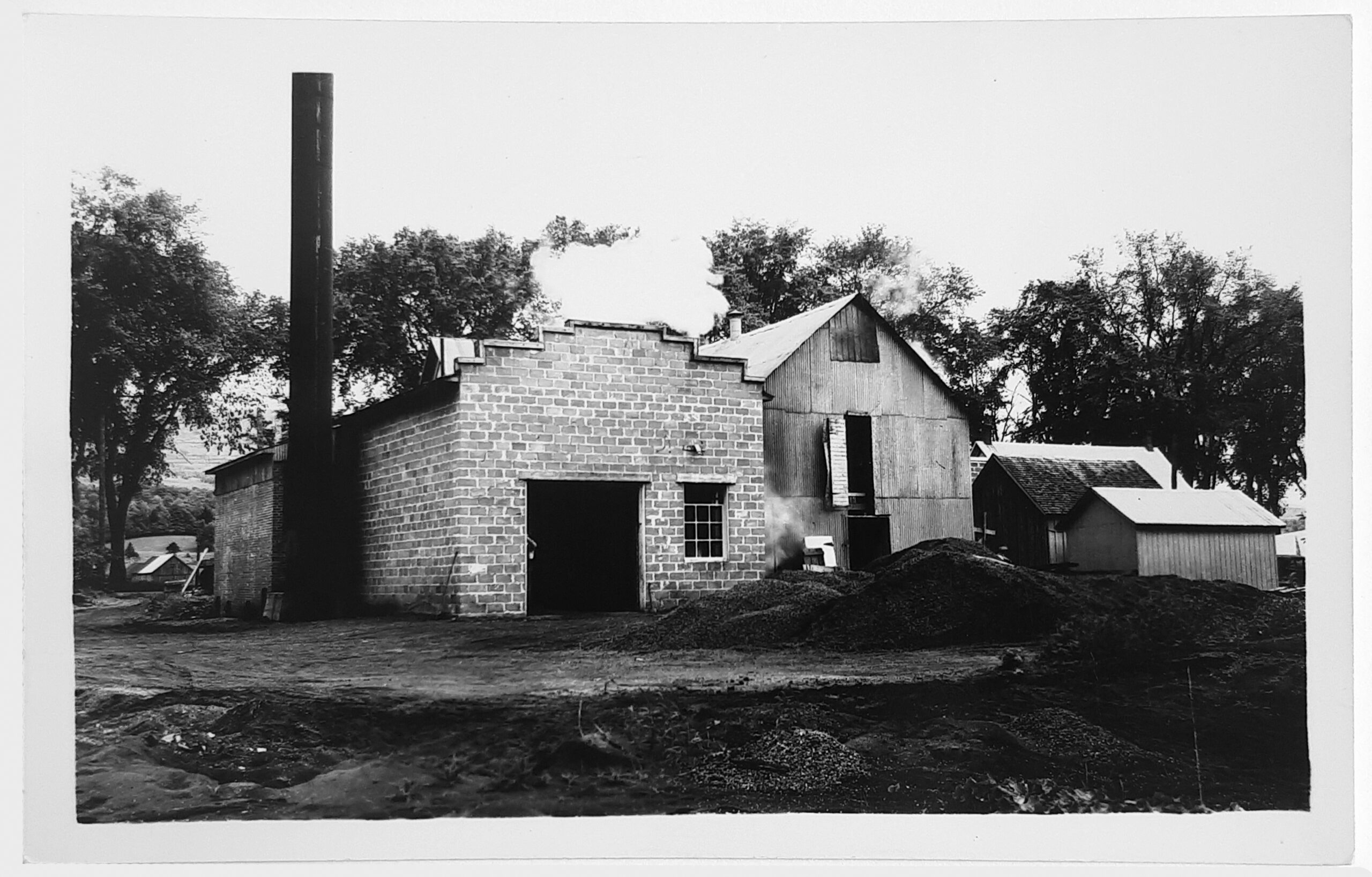
Stéphane Durand
Was in residence from October 2022 to June 2023
Aesthetics, imagination, reflection
(Art and science: connections to contemplate)
Stéphane Durand completed doctoral and post-doctoral studies in theoretical physics in Montreal and Paris. He is professor of physics at Édouard-Montpetit College and a member of the Centre de recherches mathématiques (CRM) at Université de Montréal. He published the books“Comprendre Einstein en animant soi-même l'espace-temps” and “Les carnets insolites du prof Durand”, the latter inspired by his 150 radio columns for Radio-Canada's Années-lumière. He has been the recipient of several popularization awards. Additionally:
- He designed an exhibition on “Time according to relativity”, an integral part of the exhibition “Eternity: human dreams and scientific realities” presented at the Musée du Fjord du Saguenay in 2017.
- He was a finalist in the 2007 Brèves Littéraires short story competition for his text “Le paradoxe d'Olbers” (published in the Spring 2007 issue).
- He designed the show “L'Univers: de l'infiniment petit à l'infiniment grand” presented at the Montreal Planetarium in 1989.
His artistic approach can be summed up in five points:
- A parallel reflection on the evolution of “sensibilities” in art and science, i.e. why and how innovative and revolutionary concepts (artistic and scientific) end up becoming well accepted, even commonplace. In other words, to show how art and science change our sensibility, i.e. our way of seeing and understanding reality; how they shake our certainties and push back the limits of our imagination. Many works have caused a scandal before being accepted, and this is true of both science and art.
- Develop conceptual imagination through multimedia, artistic and metaphorical processes.
- To provoke reflection on the concept of time and the 4th dimension through important works of art history and interactive multimedia installations.
- Get people thinking about the power of aesthetics in science.
- Highlight the role of constraints as a catalyst for creativity. This is true in literature, poetry, visual art, architecture and science:
Constraint and freedom are inseparable functions of the work. (…)
Constraint is what allows freedom, freedom is what arises from constraint.”
Georges Perec
Through his practice, Stéphane aims to :
- Introduce a physics principle into every work of art.
- Introduce the public and day campers to science through aesthetic constructions, artistic presentations, scientific puzzles (in the field of architecture), machine bikes, etc.
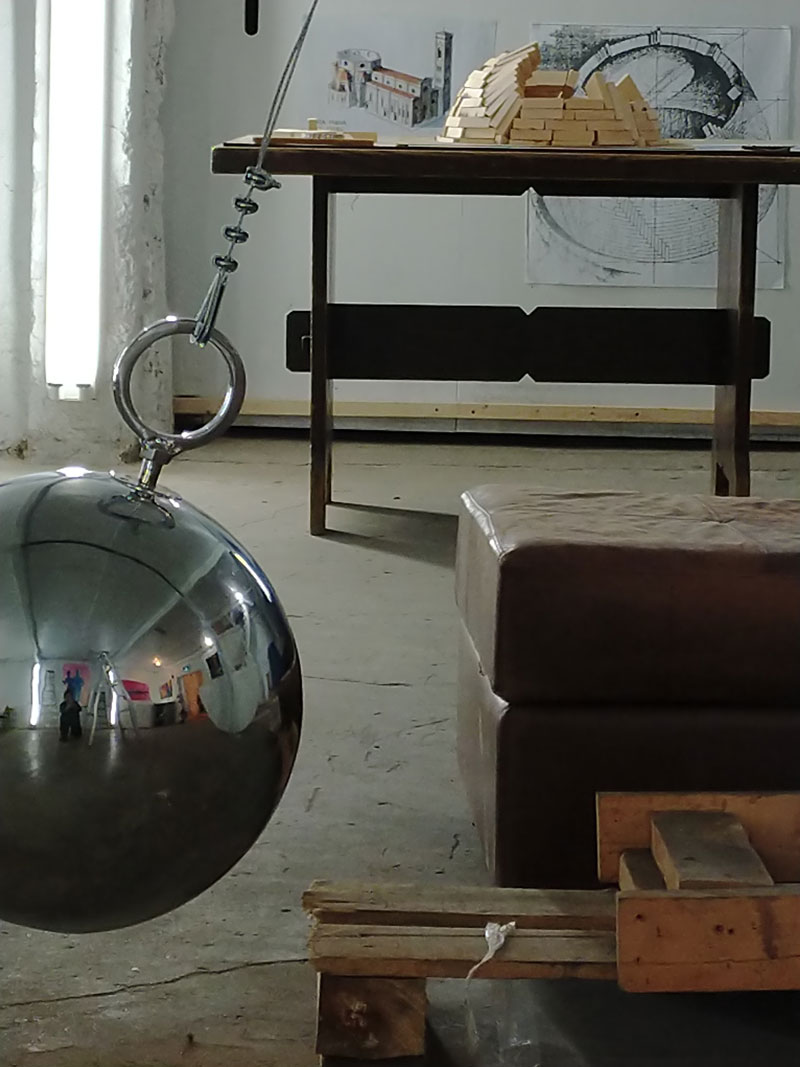
A 100 kg pendulum!
Jeremy Le Chatelier
Was in residence from June to October 2022
Jeremy Le Chatelier is a Quebec-based multidisciplinary artist
who combines painting, photography and sculpture whenever
opportunities and inspirations arise. Experimentation,
abstraction and recuperation are at the heart of his practice, shaping
work that is refined, tactile and tangible. His fascination with
children's creative freedom often brings him back to an honest, spontaneous brushstroke. With a degree in design, aspects of composition and form play an important role in his work.
The works in this exhibition are the result of three years of work
on a series entitled Sienna. A dozen paintings and over twenty sculptures make up this ensemble. These works are created entirely by hand, using mostly found and salvaged materials from rubbish dumps, building sites and the like.
Beyond the individual works, this exhibition seeks to highlight the spatial relationship between my creations and the architectural canvas of the Sutton School of Art.
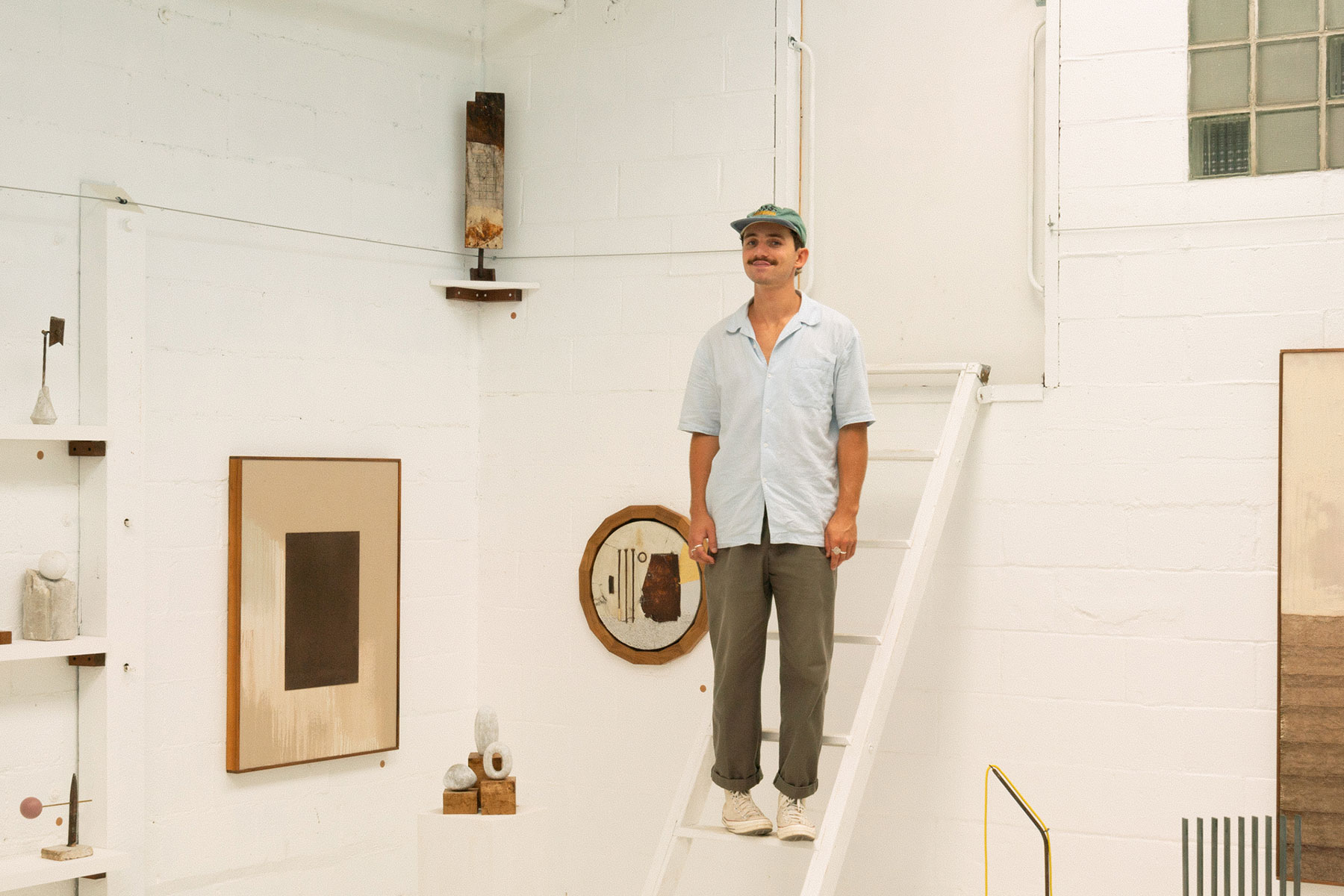
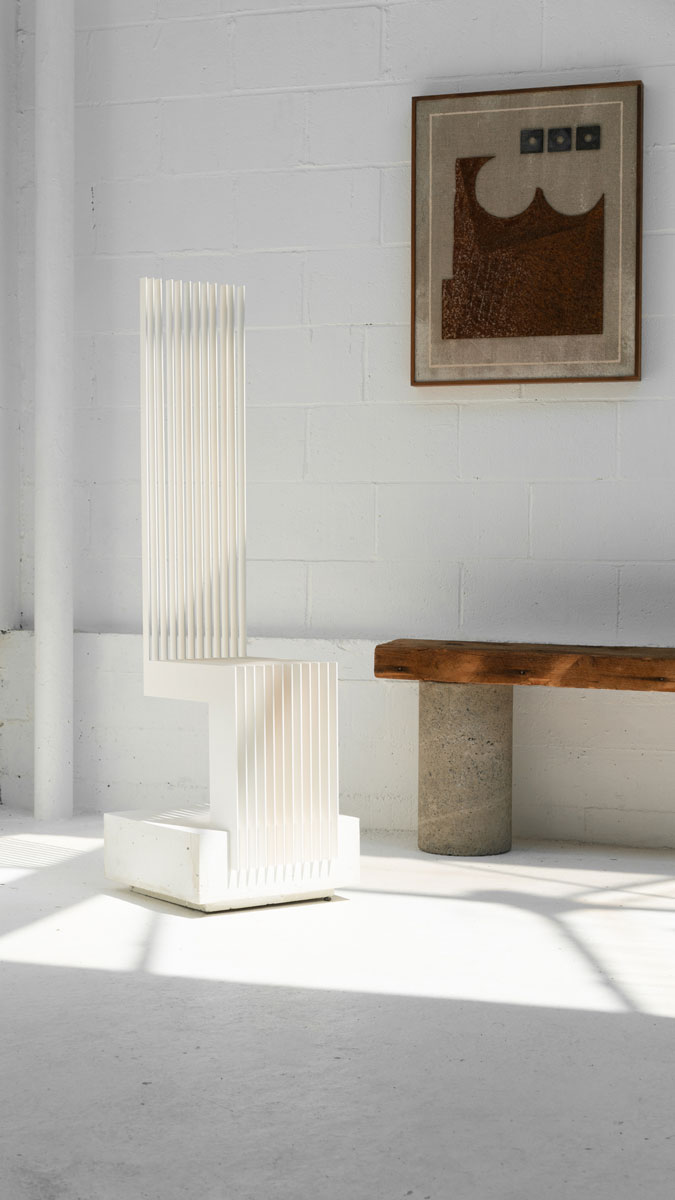
Maxime Brouillet
Was in residence from May to September 2021
Recognized for his perceptive look at architectural projects, Maxime Brouillet began his architectural photography practice in 2013. Focusing on the detail of the built environment, his work has won several awards since the beginning of his career. Beyond photography, Maxime values the experience of the space and an artistic collaboration between the designers and the photographer.
Résurgence - The exhibiti
Fig. To reappear, to re-emerge. If (architectural) photography is a device for framing spaces and buildings removed from their real context, why do we read it as objective documentation? How is this invisible seal of truth affixed? The photographer scoured his archives to find out where visual elements had been excluded or replaced. By removing the visual elements that make up the final image, the broadcast image, the consumed image, he attempts to demonstrate that architectural photography is part of the visual arts, a fabrication of the image.
What are the standards of architectural representation that justified the decisions to remove or modify these visual elements? These choices have multiple origins: photographer, architect, user, owner and distributor. They highlight the symbiotic nature of architectural photography. These reversals are an invitation to multiply readings to understand the interplay of signs. The image becomes a game of speculation about the original space, what has been masked, or what has replaced a revealed element, a game of constructing reality. Make visible what is invisible in the final broadcast image.
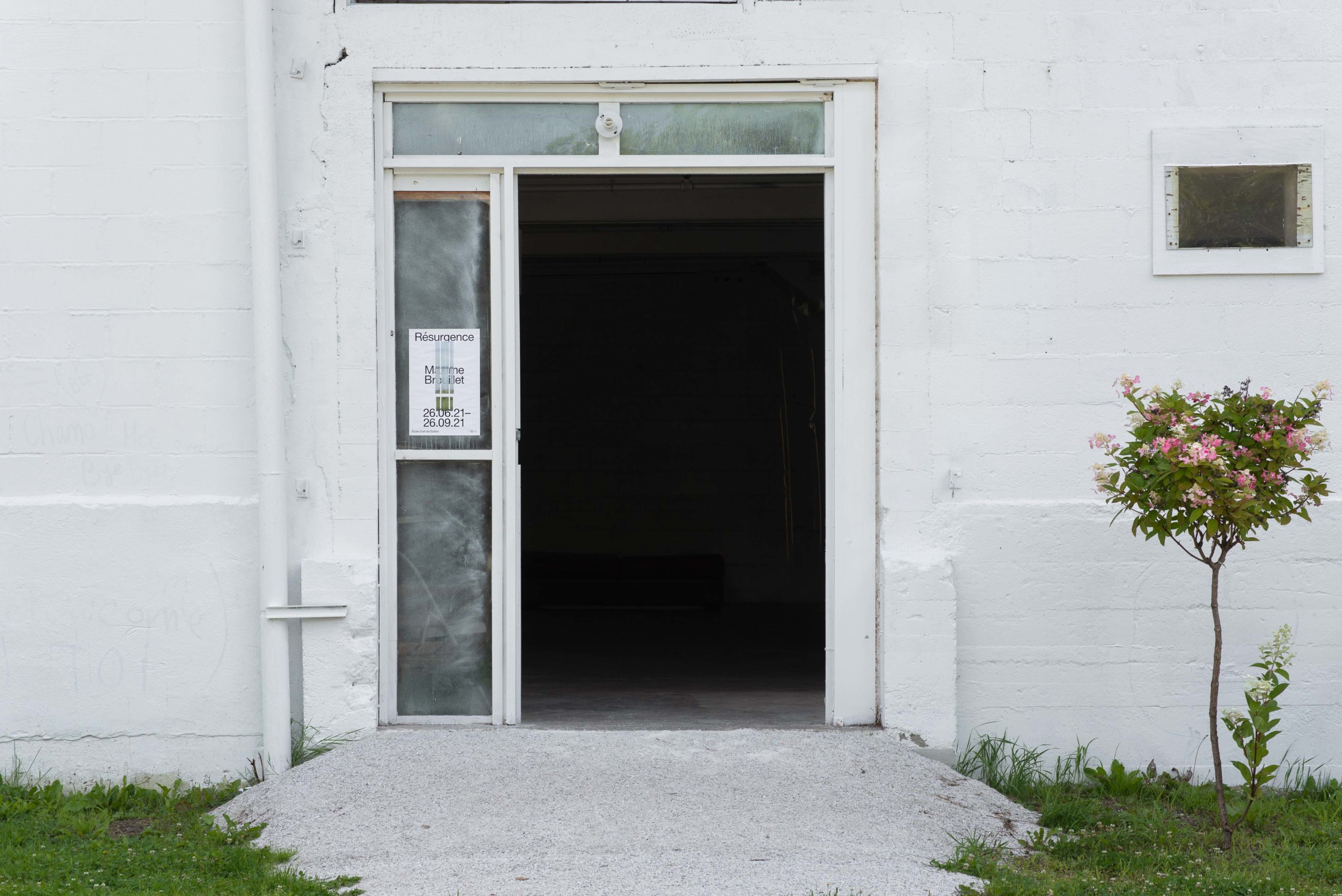
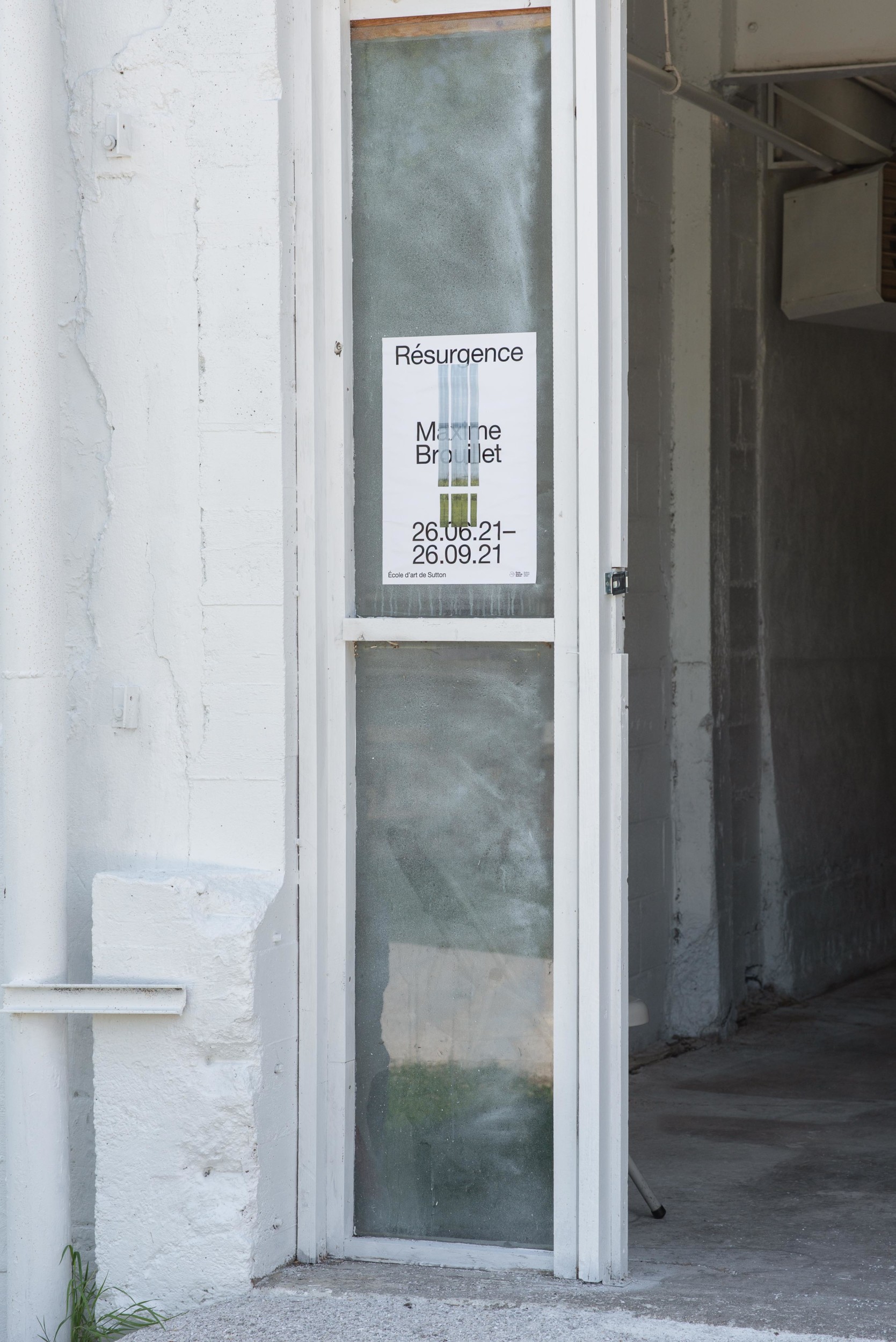
Rebecca Brilvicas-Pinsonnault
Was in residence from May to September 2020
With a Bachelor's degree in Visual and Media Arts from the Université du Québec à Montréal (2015), Rébecca Brilvicas-Pinsonnault is an emerging visual artist. Born in Cowansville, she was naturally drawn to art and creativity from an early age, to which she quickly added a passion for travel and flavors. To satisfy her wanderlust and pay for her art studies, the young woman began a career in reforestation in British Columbia. Eight years of learning, traveling, tree-planting and enriching experiences later, she embarks on the year 2020 as a springboard for her artistic career.
After an introductory course in the Japanese language, she began a month-long artistic residency in Japan. She is inspired by the country that has long been her dream. On her return from her travels, she had the chance to work on a vision that was close to her heart, that of a unique art school in Sutton.
Expo Shizen O Toshite - Through Nature / À Travers La Nature - the exhibit
The world of wabi-sabi (侘寂), a Japanese perspective on existence that transcends all matter and manifests itself in time. This aesthetic can be defined as a love of impermanence or of all that is ancient. It's the wisdom of beings who have come through trials, and it's also the beauty of things said to be fallen or considered incomplete, imperfect. We can learn to cherish our breaks and scars and draw from them a tremendous truth and authenticity.
In these times of reflection on the urgency of living through our modes of consumption, it's good to dare to remain quiet (within oneself) to contemplate (one's world). Enter the space to follow the traces in which the body reveals itself without having physically remained there. We can see that the artist has stripped himself of all figurative reference points to offer his being to the design of the nature that inhabits him. His drawings thus express the uniqueness of his person, and it is precisely in this individual expression that a fundamental individual power manifests itself, to be passed on to children. The very fact of existing forces us to deal with the unexpected, with chance and coincidence. During the meditative sessions that are the preludes to her creative work, Rebecca finds the concentration she needs to fix her impulses on paper.
Mental abstraction or physical language? This enigmatic lucidity is a pictorial rendering that is only possible through the creative gesture. It's the result of the quiet strength of a plant and mineral intelligence that gives access, if we're willing, to the path mapped out for us by inner movements.
